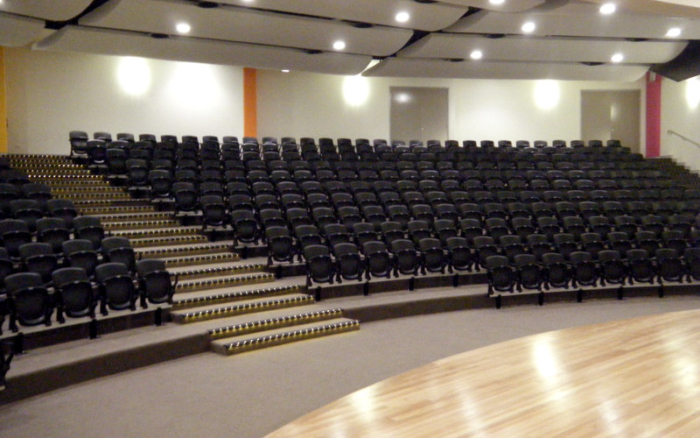
AUDITORIUM SEATING FOR CONFERENCE HALL HOW TO
How to get your conference setup and room design properly implementedĬonference and workshop design made easy – get started for free! An In-depth Look into Room Arrangements and StylesĮach seating arrangement compliments different purposes, content and potential size of an event.How to determine the best room setup for your conference or event.An in-depth look into room arrangements and styles.In this article, we will discuss different room setups and their efficacy and drawbacks to help you choose which is the right one for your meeting, workshop or conference. Different arrangements enable variety both in learning and involvement whether the purpose is for meetings, in-person or video conferences, trainings and presentations, or workshops and interactive learning events. Thoughtful conference setup can minimize these invisible, social barriers to encourage engagement and participation. Along with this, there is also a psychological barrier between audience members, especially when they do not know each other well.


In a way, there’s always an invisible barrier between a speaker and their audience. It is a critical aspect of every event because the atmosphere the physical space creates will impact both the speaker’s effectiveness and the interaction of the audience members. Room setup is the seating arrangement of participants – the placement by which they receive content and interact with one another. Room arrangement plays a big role in making this goal happen.
AUDITORIUM SEATING FOR CONFERENCE HALL PROFESSIONAL
Inspire your little ones at this annual crowd favourite, which delves into the intricacies of Chinese music and traditional instruments.Engagement and participation, two big words that every facilitator, event organizer and meeting professional keeps in mind and set as a goal when organizing meetings, training sessions or conferences. Usher in the Chinese New Year at this annual event, with a range of traditional festive music, modern-day medleys and even popular Chinese pop tunes. See and Doįilial piety is a crucial part of Chinese culture, and this annual concert by the SCO is bound to be a heart-warming experience for visiting families. Take a seat on any given night, and you can expect to be serenaded with tunes from Yunnan, recitals that evoke the beauty of mountainous landscapes, and vocal performances that pay homage to the folk music of the Song Dynasty. Instead of discussions about wages and conditions of work, visitors to the hall will hear the plaintive notes of the huqin (bowed spiked fiddle), the haunting trill of the dizi (bamboo flute) and harmonies that hearken back hundreds of years. The building’s auditorium-where leaders of our nation’s industry and labour force once gathered-is now an 834-seat concert hall, and home to the talented maestros of the SCO. The most recent renovation of the building concluded in 2017, and saw improvements to its concert hall acoustics, internal accessibility and external landscaping.

Singapore’s National Trades Union Congress moved out of the building in 2001, and it was reopened as the Singapore Conference Hall following a $14.7 million-dollar renovation. Over the decades, the Singapore Conference Hall has been the site of many significant events, including National Day Rally speeches, the launch of the Speak Mandarin Campaign, and the 1969 state banquet to celebrate 150 th anniversary of the founding of modern Singapore. The building is emblematic of Singapore’s urban architecture in the 1960s, with cantilevered roofs and terraces to provide reprieve from the tropical heat.

Gazetted as a national monument in 2010, this historical landmark was the first modern building on Shenton Way, with bricks and foundations laid by Singapore’s samsui women (female pioneers from Sanshui district China, known for their iconic red headscarves). But from 1965 to 2001, the building was the headquarters of Singapore’s National Trades Union Congress. Step into the Singapore Conference Hall today, and you’ll hear the strains of erhu (two-stringed musical instrument) and the dulcet notes of the guqin (seven-stringed Chinese instrument).


 0 kommentar(er)
0 kommentar(er)
